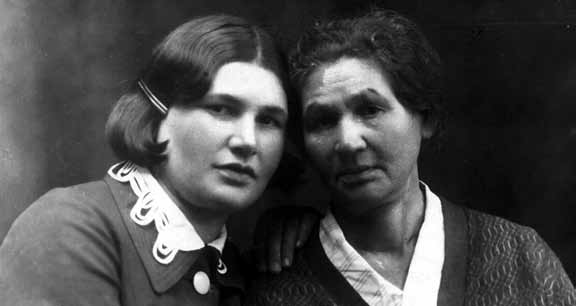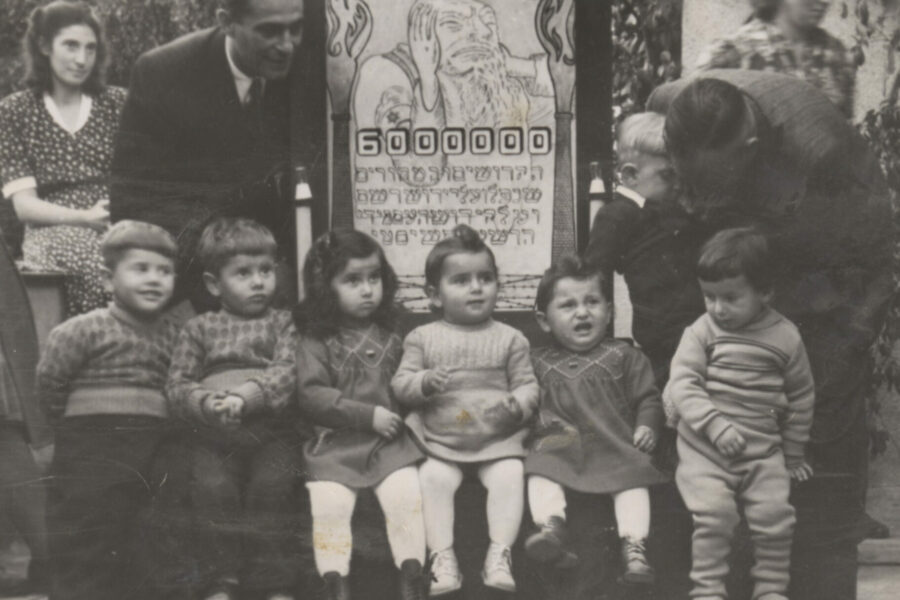I came to Chicago from Moscow. I lived my entire adult life in Chicago, but my roots are in Byelorussia. All the relatives on my maternal side were victims of the Holocaust in Vitebsk Region. About 18-20 kilometers from Vitebsk there is a tiny shtetl called Ostrovno. Jews, Byelorussians, and Poles lived there before the war, according to my mother. Life in the village was in full swing. It had a high school built early in the last century. There was a synagogue and a heder there up to a certain time. My mother studied painting in Vitebsk with the artist Yudel Peng, who had taught Marc Chagall several years earlier.
After the war only one Jewish family remained in Ostrovno, and that family moved away in the 1970s. When I visited Ostrovno in 1986, it was no longer a Jewish shtetl.
Ostrovno is well known in history. Lev Ivanovich Sapieha was born there on a family estate. A well-known social and political activist in the 16th century, he later became the lord chancellor of the Duchy of Lithuania. Back in the 1920s and 1930s, that estate was still there, along with its lovely lime alleys (often remembered by my mom, her sisters, and her brother). Ostrovno became famous during the War of 1812, which included severe fights known in history as the “fights near Ostrovno.” L.N. Tolstoy later described them in his novel War and Peace. These events are commemorated in the Gallery of Military Glory of Christ the Savior in Moscow, built in honor of the Russian victory in the War of 1812. The temple was demolished in 1931 and then restored in 2000. That is my village of Ostrovno, about which I have heard all my life.
My great-grandfather, who had eighteen children (including my grandfather Shevel Berkovich Heifetz) from two marriages, lived in Ostrovno. Ancestors of my grandmother Chaya Simhovny Heifetz (maiden name Shammes) lived there as well. My mother, her brother, and her three sisters were born there. During the 1930s the children left the parental nest. My mom went to Moscow, her brother and two sisters went to Leningrad, and only the middle sister, a teacher, lived and worked in Vitebsk. That was the life of my family until the Great Patriotic War broke out.
In the early days of the war, my father, my uncle (a professional military officer), and many other relatives went to the front. My 26-year-old aunt Fanya, after sending her husband to the front, left Vitebsk and rushed to her parents in Ostrovno with her 18-month-old son. Village residents ran away as best as they could. My father met some friends from Ostrovno among the refugees at the front. They told him that our relatives also had left. Unfortunately, they had not gone far away. My grandfather became very sick on the way, and my grandmother decided to come back, mistakenly believing (like many others) that because the Germans had not harmed Jews during World War I, they would not harm them now. But as it turned out, these were different Germans. They came to Ostrovno in early July 1941. A few days later they organized a ghetto. It was not fenced with barbed wire, but people had to sew yellow stars on their clothing and were moved to a single street. Several families had to live in one house. They had no right to go beyond this street. These people were not only Ostrovno residents but also refugees who did not have a chance to flee beyond Ostrovno. On September 30, 1941, all the Jews, about three hundred altogether—including my grandfather, grandmother, aunt, her little son, and other relatives whom I did not know—were led to a field near Ostrovno, where men were commanded to dig pits. The first ones to be shot were the men who had dug the pits. Then the others were led to the edge of the pits and shot. Dead and wounded alike fell into the pits. The Nazis ordered polizei to guard the tomb so that nobody could get out. All this was narrated by several people who had miraculously escaped and by those residents who came to watch this spectacle.
My uncle learned about the massacre from his friends in 1944, when he was on a business trip to Moscow from the front line. He was able to go to Ostrovno personally. He was told that a neighbor’s parents took my aunt’s child to save him, but her husband, scared that they would be shot for it, took Misha to the execution site. The polizei placed the child on his bayonet and threw him into the hands of his mother. Before my grandfather’s death, he cried, “My son, they will be revenged for that!” And he did take revenge for them. My uncle, Lt. Col. S.S. Heifetz, fought from the very first up to the very last day of the war on the 3rd Ukrainian Front in the Panzer Army of Marshal Rybalko. He was decorated with many orders and medals, including an order named for Bogdan Khmelnitskiy that honored the boldest operations.
In 1956, victims’ relatives and residents of Ostrovno who miraculously had survived the massacre came back after learning that the fields containing the remains were about to be plowed up. (Some of the wartime survivors had been children whose lives were saved by residents of neighboring villages who hid them, passing them from hand to hand.) Relatives and survivors gathered to move the remains to one place. Among those present were my uncle and my aunt. However, moving the remains seemed impossible. People fainted when they recognized the remains of their relatives by some familiar items of clothing and footwear. Then a decision was made to raise money and build a fence and an obelisk with the inscription: “Here lie 300 Soviet citizens who were brutally killed by the Nazis on the 30th of September, 1941. ”Originally the inscription read “300 Jews”—all of them were Jews—but the local government decided to change the word “Jews” to “citizens.”
During my last visit to Ostrovno, in 1986, I was walking from the bus stop when one of my fellow travelers, upon learning that I was going to the obelisk, said, “I did not know what kind of a monument it was.” Of course, how would she know that those “citizens” were murdered only because they happened to be born Jews?
We will remember them as long as we live and will pass on these stories to the next generation.
Written by Bella Gorelik, Never Heard, Never Forget: Vol. I, 2017






